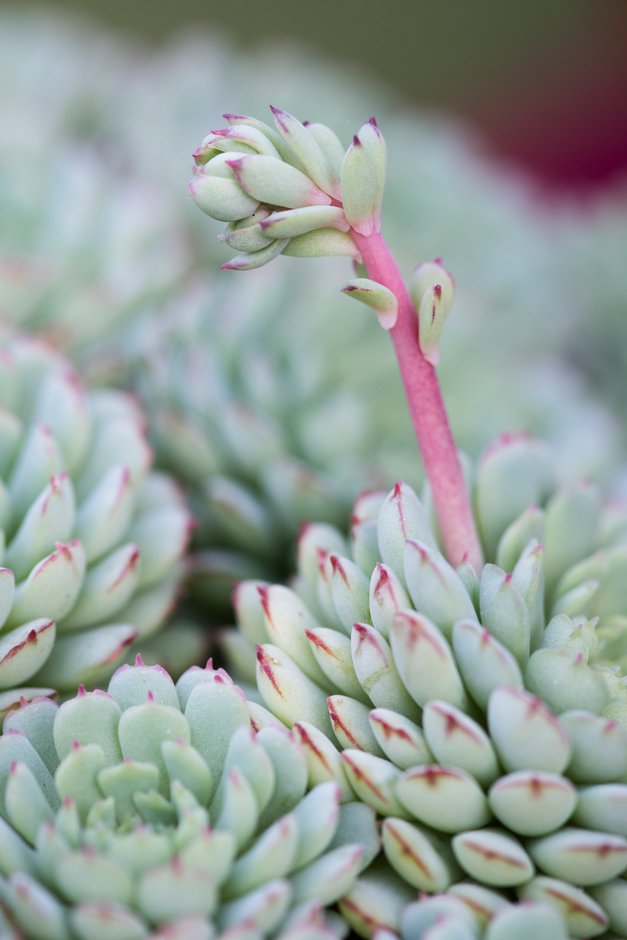Echeveria minima
miniature echeveria
An evergreen succulent forming tight clusters of small rosettes 12-15cm across with pale blue-green leaves tipped and edged with a pink-red marking. Arching stems carry orange-yellow flowers above the rosettes in late spring and summer
Size
Ultimate height
0.1–0.5 metresTime to ultimate height
5–10 yearsUltimate spread
0.1–0.5 metresGrowing conditions
Moisture
Well–drainedpH
Acid, Alkaline, NeutralColour & scent
| Stem | Flower | Foliage | Fruit | |
| Spring | Orange Yellow | Blue Green | ||
|---|---|---|---|---|
| Summer | Orange Yellow | Blue Green | ||
| Autumn | Blue Green | |||
| Winter | Blue Green |
Position
- Full sun
Aspect
East–facing or South–facing or North–facing or West–facing
Exposure
Sheltered Hardiness
H2Botanical details
- Family
- Crassulaceae
- Native to GB / Ireland
- No
- Foliage
- Evergreen
- Habit
- Matforming
- Genus
Echeveria can be evergreen succulent perennials or subshrubs with rosettes of colourful, fleshy leaves and racemes or panicles of urn-shaped flowers
- Name status
Correct
- Plant range
- Mexico
How to grow
Cultivation
Grow under glass in a standard cactus compost, in bright, filtered light. When in growth water moderately and feed every two or three weeks with a balanced liquid feed. Keep almost dry in the winter. Stand plants outside during the summer months. See Echeveria and houseplant cacti and succulent cultivation for further advice
Propagation
Propagate by seed, leaf cuttings or from offsets
Suggested planting locations and garden types
- Patio and container plants
- Low Maintenance
Pruning
No pruning required
Pests
May be susceptible to mealybugs, vine weevil and aphids
Diseases
Generally disease-free
Get involved
The Royal Horticultural Society is the UK’s leading gardening charity. We aim to enrich everyone’s life through plants, and make the UK a greener and more beautiful place.
